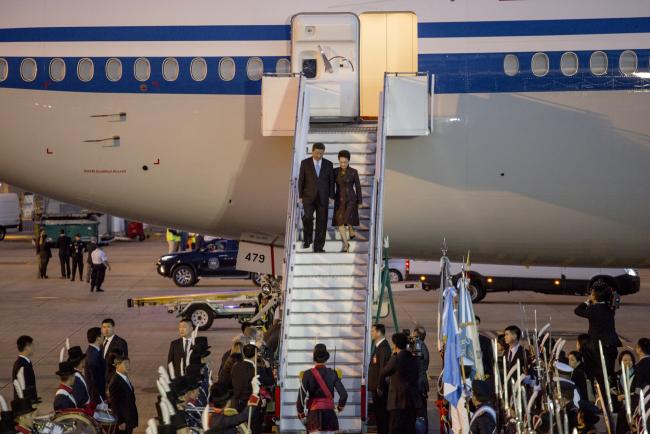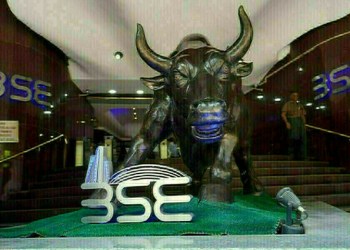 © Bloomberg. Xi Jinping, left, and Peng Liyuan, China’s first lady, arrive at Ezeiza Airport ahead of the G-20 Leaders’ Summit in Buenos Aires, on Nov. 29, 2018. Photographer: Sarah Pabst/Bloomberg
© Bloomberg. Xi Jinping, left, and Peng Liyuan, China’s first lady, arrive at Ezeiza Airport ahead of the G-20 Leaders’ Summit in Buenos Aires, on Nov. 29, 2018. Photographer: Sarah Pabst/Bloomberg(Bloomberg) — China’s worsening manufacturing slowdown and uncertainty over the trade war with the U.S. are raising pressure on policy makers to do more to support growth.
The first official reading of China’s economy in November showed the on the brink of contraction. New export orders contracted for a sixth month while the non-manufacturing gauge, reflecting activity in the construction and services sectors, expanded but at a slower pace.
In the face of the slowing economy, policy makers have tried targeted tax cuts, investment incentives, and efforts to funnel more credit to the private sector and infrastructure. So far the results have been lackluster and that domestic weakness adds to the pressure on President Xi Jinping to prevent the trade war with the U.S. from getting worse.
“Chinese growth is still slowing and suggests that more vigorous policy stimulus is likely required to help stabilize it,” said Shane Oliver, head of investment strategy at AMP Capital Investors Ltd. in Sydney. That’s particularly so “if there is no breakthrough with the U.S. on trade soon.”
Manufacturing output prices plunged in November, dropping to 46.4 from 52 a month earlier , while input prices fell to 50.3 from 58. That “cliff-drop” points to a further weakening of industrial profitability and manufacturing investment growth going forward, said economists led by Eva Yi at China International Capital Corp. in Beijing in a note.
Demand Collapse
“Domestic demand leading indicators are collapsing in China,” they wrote, adding that stabilizing that demand “should be taken as the top priority for cyclical management right now, where delays in proper policy adjustments may lead to further pain later.”
The cooling property market in November weighed on construction, according to Liu Xuezhi, an economist at Bank of Communications Co. in Shanghai. Construction activity dropped to 59.3 from 63.9 last month, but Liu says the faster expansion of new orders and business activity expectations indicate a potential increase in building work.
The next key event to watch is the Central Economic Work Conference that’s likely to be held in mid-December, according to Bank of America Merrill Lynch (NYSE:) economists led by Helen Qiao. Should Xi and Trump fail to reach a trade deal this weekend, Chinese policymakers are expected to roll out more easing measures to shore up growth, they said.
Xi-Trump Summit
Xi will meet President Donald Trump on Saturday, and while Trump has indicated that a deal might be on the table, he has also threatened more tariffs if the talks don’t go well.
A continued escalation of the trade war is the “most likely” outcome of the highly anticipated meeting at the Group of 20 summit in Argentina, said Goldman Sachs Group Inc (NYSE:). in a note.
A “pause” in which existing tariffs remain in place “but the two sides agree to keep talking with escalation put on hold” is a close second, it said. Failure to reach a deal could see Chinese export growth weaken in the coming months and the economy would also probably slow from early 2019, Goldman said.
There is further downside ahead despite stimulus starting to kick because higher tariffs and their related impact will hit the economy more in coming months, said Wang Tao, head of China economic research at UBS Group AG in Hong Kong. The PMI will dip below 50 before it rebounds, she said.
The economy “isn’t at its bottom yet” and China is just halfway through the economic cycle, according to Larry Hu, a Hong Kong-based economist at Macquarie Securities Ltd. Policy has roughly reached the “inflection point”, where stimulus will be expanded, including a reduction in benchmark interest rates likely take place in the first quarter in 2019, he said on Bloomberg TV.
Source: Investing.com



























